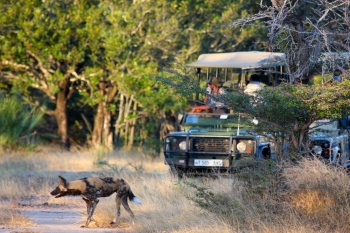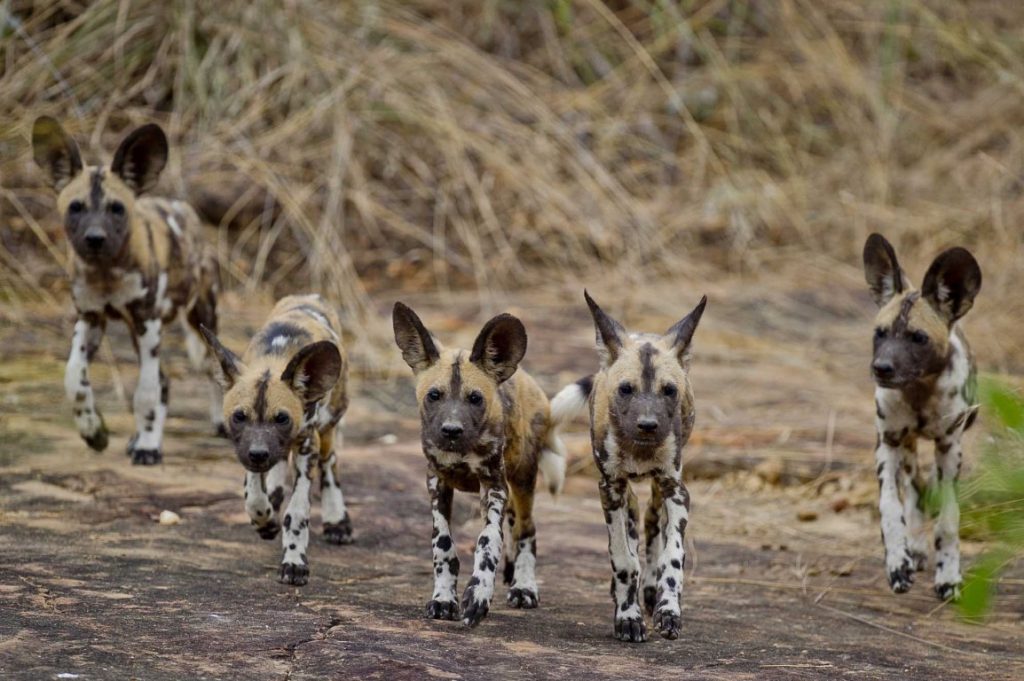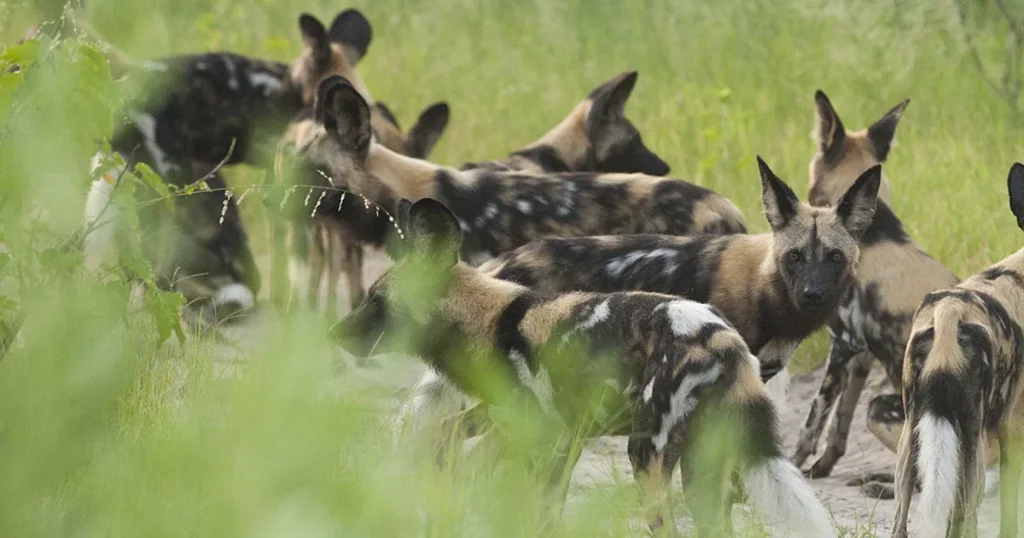Selous Game Reserve: A Sanctuary for Endangered African Wild Dogs




African Wild Dogs
The Selous Game Reserve in Tanzania is one of Africa’s largest and most ecologically diverse protected areas, recognized globally for its critical role in preserving endangered species, including the African wild dog. Known for their intelligence, teamwork, and unique appearance, African wild dogs are one of the continent’s most endangered carnivores. With their colorful, mottled coats and large, round ears, these social animals are a rare and exciting sight in the Selous landscape.
African Wild Dogs: An Endangered Species
Also called painted wolves due to their striking coats, African wild dogs are unique in both appearance and behavior. Each wild dog’s coat has a unique pattern of brown, black, and white patches, making them easily identifiable. These animals are highly social, living in close-knit packs and hunting cooperatively to ensure survival. Tragically, African wild dog populations have been heavily impacted by habitat loss, human-wildlife conflict, and diseases like rabies and distemper. Selous Game Reserve offers one of the last strongholds for these endangered animals, providing them with a vast, protected area where they can thrive.
The Importance of Selous Game Reserve for Wild Dog Conservation
As one of the last large refuges for African wild dogs in Africa, Selous Game Reserve plays a crucial role in their survival. Spanning over 50,000 square kilometers, Selous provides a wide range of habitats, including woodlands, grasslands, and wetlands, that support a stable population of these unique predators. The reserve’s low human population density and its commitment to anti-poaching efforts create a safe haven for wild dogs, offering them ample space to roam and hunt.
Life in the Pack: The Social Structure of African Wild Dogs
African wild dogs are renowned for their cooperative pack dynamics. Each pack has a dominant pair that leads the group, usually the only breeding pair, while other members help raise the young and hunt for food. Wild dog packs are typically very cohesive, and members demonstrate strong loyalty and coordination. This teamwork allows them to hunt successfully and care for injured members, setting them apart from other predators. Visitors to Selous Game Reserve may witness the pack’s synchronized movements as they hunt, communicate, or rest in groups, providing a fascinating look at their social behaviors.
Hunting Techniques and Diet
African wild dogs are among Africa’s most effective hunters, with success rates far higher than those of lions or leopards. Using their speed and endurance, wild dogs are capable of long chases, sometimes covering several kilometers to wear down prey. Their cooperative hunting tactics allow them to take down large animals, such as impalas, wildebeests, and even zebras. Selous Game Reserve’s varied landscape offers an ideal hunting ground for these packs, with open grasslands and woodlands providing plenty of prey.
Challenges Facing African Wild Dogs in Selous
Despite the relative safety of Selous, African wild dogs face numerous challenges to their survival. One of the primary threats is the spread of diseases, particularly rabies and canine distemper, which can devastate packs. Human-wildlife conflict also poses a risk; as human settlements expand near protected areas, wild dogs can come into contact with local communities, leading to potential conflicts. Conservation efforts in Selous are focused on mitigating these threats, ensuring the long-term protection of wild dogs in the reserve.
Conservation Efforts for African Wild Dogs in Selous
Selous Game Reserve, a UNESCO World Heritage Site, is dedicated to the conservation of African wild dogs and other endangered species. The reserve conducts extensive anti-poaching patrols and works with nearby communities to raise awareness about the importance of wildlife conservation. To combat disease, vaccination programs are sometimes implemented in surrounding areas to protect both domestic animals and wild populations. Moreover, ongoing research in Selous helps scientists track wild dog populations, monitor their health, and study their behaviors.
Best Time and Places to See African Wild Dogs in Selous
The best time to view African wild dogs in Selous Game Reserve is during the dry season, from June to October. During these months, water sources are limited, drawing wildlife—and predators like wild dogs—closer to rivers and waterholes, making sightings more likely. Selous’s open grasslands and woodlands provide ideal habitats for spotting these unique carnivores on game drives. However, wild dogs are highly mobile, covering vast distances, so encountering them can be challenging and rewarding for visitors who are lucky enough to catch a glimpse.
A Unique Wildlife Encounter: Why Selous Is Ideal for Wild Dog Enthusiasts
For wildlife enthusiasts and photographers, seeing African wild dogs in their natural habitat is a rare and memorable experience. Selous offers the chance to observe these remarkable animals as they interact with one another, hunt, and raise their young in a relatively undisturbed environment. Their intricate social structures and hunting techniques make them one of Africa’s most fascinating species, adding an unforgettable element to any safari in Selous.
Selous Game Reserve: A Lasting Refuge for African Wild Dogs
Selous Game Reserve is not only a sanctuary for African wild dogs but also a symbol of hope for the preservation of endangered species. Its vast, protected landscapes allow wild dogs to roam freely and maintain their unique way of life. Conservation efforts within the reserve and surrounding communities aim to safeguard these incredible animals for future generations, ensuring that Selous continues to be a safe haven for Africa’s endangered wildlife.
Exploring Selous Game Reserve offers a rare glimpse into the lives of African wild dogs and a chance to witness the resilience of one of nature’s most complex social hunters.

One Comment